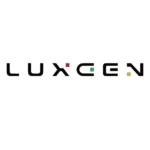Kia Corp. reported a modest profit increase in the third quarter as higher warranty costs and sales incentives offset gains from favorable exchange rates and improved product mix.
Net income rose 2.1% to 2.27 trillion won ($1.67 billion) in the quarter ended September 30. Operating profit edged up 0.6% to 2.88 trillion won while revenue increased 3.8% to 26.52 trillion won.
The South Korean automaker faced headwinds from production disruptions at its Hwaseong plant and the discontinuation of its Rio subcompact model. Global sales volume declined 1.9% to 727,601 units.
Despite challenges, Kia maintained profitability through higher-margin vehicle sales. SUVs and crossovers accounted for 68.9% of total sales, up from 67% a year earlier. Hybrid vehicle sales reached 28.2% of domestic volume, compared to 25.9% last year.
The company’s reliance on sales incentives grew amid intensifying competition, particularly in key markets like the U.S., where spending on buyer inducements increased. A 631 billion won charge for warranty extensions on Lambda II engines also weighed on results.
Looking ahead, Kia raised its full-year revenue guidance to 105-110 trillion won from 101.1 trillion won, while maintaining its operating margin target at around 12%.
The automaker plans to boost sales with new model launches, including the EV3 compact SUV and hybrid versions of its K8 sedan and Carnival minivan.






